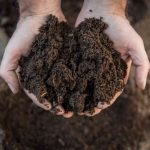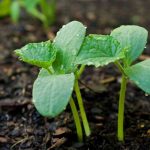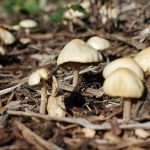Mushroom compost can be used in a variety of ways. It’s excellent for moistening gardens, lawns, and flower beds before planting. However, there are some plants that don’t like mushroom compost.
For example, the ericaceous plant family, such as hydrangeas, blueberries, aster, azalea, Japanese Marple, and holly does not thrive in mushroom compost due to its alkalinity. Ericaceous plants require acidity, which mushroom compost lacks.
Mushroom compost is great for bushes, trees, perennials, and vines, but it’s not suitable for all plants.
In this article, we’ll talk about the plants that aren’t mushroom compost-friendly, as well as some mushroom compost basics and how to use them effectively.
Table of Contents
What is Mushroom Compost?
Mushroom compost is made from the harvesting of mushrooms.
It’s prepared with the scraps from a mushroom harvest. As a result, it’s sometimes called “spent mushroom compost.”
It aids in the retention of moisture in the soil and gives much-needed nutrients.
High alkaline values are common in mushroom compost. It also helps to neutralize acidity in the soil.
Is Mushroom Compost Safe For Plants?
It improves the soil and provides nutrients necessary for plant growth.
Mushroom compost also improves the soil’s water-holding capacity, reducing the amount of watering required. Most garden plants can benefit from mushroom compost.
How To Use Mushroom Compost on Plants
If you’re starting a vegetable garden, for example, you can include mushroom compost into the soil.
It’s also a fantastic supplement to the soil layer before laying sod.
Cover your annual or perennial bed with a 3-inch layer of mulch. After that, dig 6 inches down to start planting. You’ll get the finest results if you do it this way.
You won’t need to add anything more to your lawn this season if you use mushroom compost. Continue to water it and remove any weeds that appear.
When it comes to plants, the best place to add mushroom compost is at the base of the stem. This permits the plant to quickly absorb the most nutrients.
Mushroom compost can also be used for potted houseplants.
Plants That Don’t Like Mushroom Compost

1. Blueberry
Blueberries require acidic soil as well. Although they may grow in the shadow, they prefer to be in the sun.
Regular irrigation that keeps the soil moist at all times will yield the best results. To provide the most incredible circumstances for your blueberries, add peat moss to the soil.
2. Hydrangea
Mushroom compost is fine for hydrangeas.
They can thrive in both alkaline and acidic environments. The hue of the flowers varies depending on the soil’s pH level.
Hydrangeas that are grown in acidic soil produce blue blossoms. Because mushroom compost lowers the pH, pink flowers may appear.
3. Azalea
If planted in alkaline soil, azaleas will starve to death. This plant would be killed by mushroom compost. Azaleas require a pH range of 5.5 to 6.2.
The bush’s leaves begin to turn yellow without the acid. The shrub eventually dies away.
4. Aster
Asters thrive in soils that are neutral or slightly acidic.
It is not necessary to have a high pH level. It should be between 5.8 and 6.5. Asters require some moisture, but not much.
You can water them once a week after they’re fully developed.
5. Cranberries
Acidic soil is ideal for cranberries. For the optimum outcomes, they require a pH range of 4.0 to 5.5.
Make sure the grow bed is raised or sunk so you can control drainage and the acid level.
6. Japanese Maple
Japanese maples are low-maintenance trees. They prefer sandy or loamy soil. To perform at their best, they require a small amount of acidity.
Japanese Maples have a harder time thriving in high alkaline soils, such as those mixed with mushroom compost.
7. Holly
Holly plants prefer acidity. When it comes to holly, don’t use mushroom compost to keep it moist. Yellow leaves are common on holly plants that are grown in alkaline soil.
If your holly plant starts to yellow, add mulch, peat moss, or pine needles around it to raise the soil's pH level.
8. Fern
Ferns may grow in both alkaline and acidic soils, but they prefer acidic soils.
Moisture is also beneficial to them. If your soil is excessively acidic, mushroom compost can help to neutralize some of the acids and bring the pH down to roughly 5.0 to 6.0.
The compost also aids the fern plant in retaining moisture.
9. Gardenia
Gardenias require a low acidic environment to thrive.
The pH should be in the range of 5.0 to 6.0. If you wish to plant them near your house’s foundation, the acid level will most certainly be too high.
In that case, a small amount of mushroom compost might be used to neutralize the acid. Otherwise, place them farther away from the structure.
10. Juniper
Juniper trees and bushes can grow in a variety of soil conditions. They thrive in soil that is somewhat acidic. They require adequate drainage.
The roots of junipers decay when they are overwatered. To get the best results, keep the pH level above 5.0.
11. Rhododendrons
Rhododendrons thrive in pH ranges of 4.5 to 6.0. They don’t do well on soils that contain a lot of calcium.
This is primarily due to the plant’s iron becoming ‘locked up’ and inaccessible.
12. Magnolia
Magnolias need moist, well-drained soil rich in organic matter, so adding some well-rotted manure or compost to the planting hole and properly mixing it in is highly recommended.
A neutral or slightly acid soil with a pH of 5.5–6.5 is ideal for most magnolias.
13. Camellias
Camellias prefer acidic or ericaceous soil, with a pH of 5.5-6.5.
If the pH in your location is neutral, add composted bracken (available via mail order), handmade leaf mound, or composted pine needles to the planting hole, then cover with these as well.
14. Heathers
Heathers prefer slightly acidic, damp (but not soggy) soil. They may grow in very poor, rocky soil, although acidity is crucial.
Work in acidic soil additives like moist peat moss if your soil is neutral or alkaline. Sedge peat and leftover mushroom compost should not be used because they are alkaline.
15. Fruit Bushes
Soft fruit may thrive in a variety of soil types, although it prefers to be rich and well-drained. They don’t like heavy, saturated soils, so if you have clay soil, dig in a lot of organic debris.
What Vegetable Plants Do Not Like Compost?
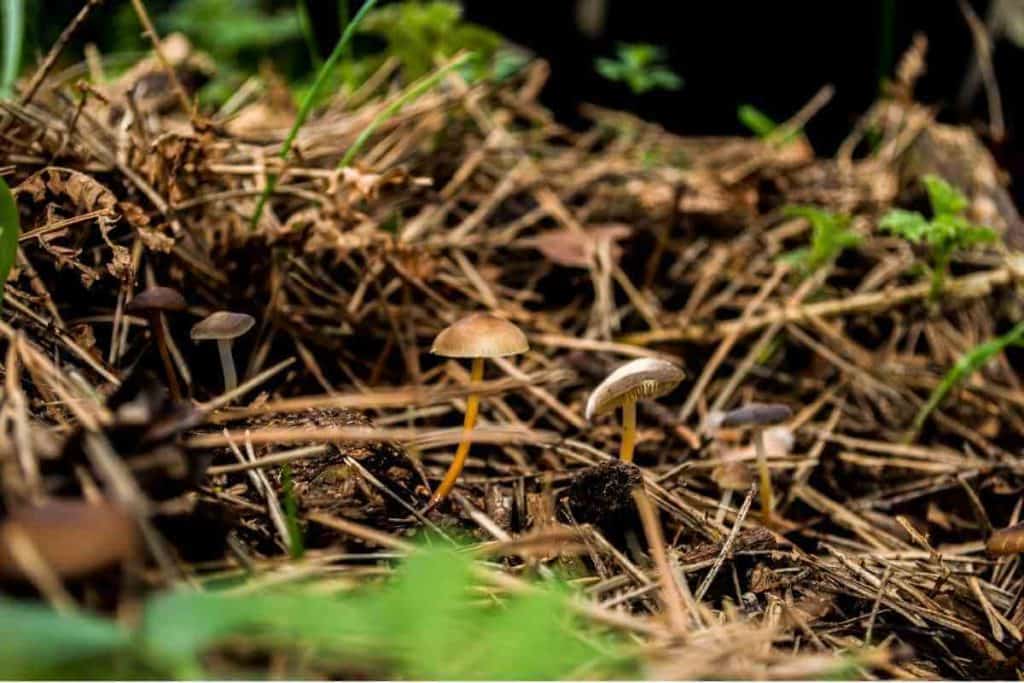
Animal manure is not recommended for certain crops, according to experts.
Vegetable plants that grow underground do not like mushroom compost. Some of them include:
Greens and vegetables that grow on the ground, such as lettuce, herbs, squash, cucumber, and spinach, are no exception.
Some people combine lime with manure. This is not in any way a good practice. In fact, because of the chemical reaction, it is a risky thing to perform.
Nitrogen is converted to ammonia gas when lime is added. The gas then wanders away and is no longer useful in the soil.
Identifying the best time to apply animal manure is a feasible solution to this problem. The ideal time is in the fall, while the greatest time for lime is in the spring.
Furthermore, depending on the type of soil you have, you should avoid using lime. It’s something you can be sure of by checking the pH of the soil.
What To Use Instead of Mushroom Compost
Growing plants benefit from mushroom compost since it is rich in nutrients.
However, there are alternatives that do not neutralize the acids in the soil that some plants require.
To help your plants thrive, try any of the following:
- Soil for pots
- Composting with worms
- Manure from poultry
- Manure from cows
- Kitchen Compost Mulch
Plants That Like Mushroom Compost
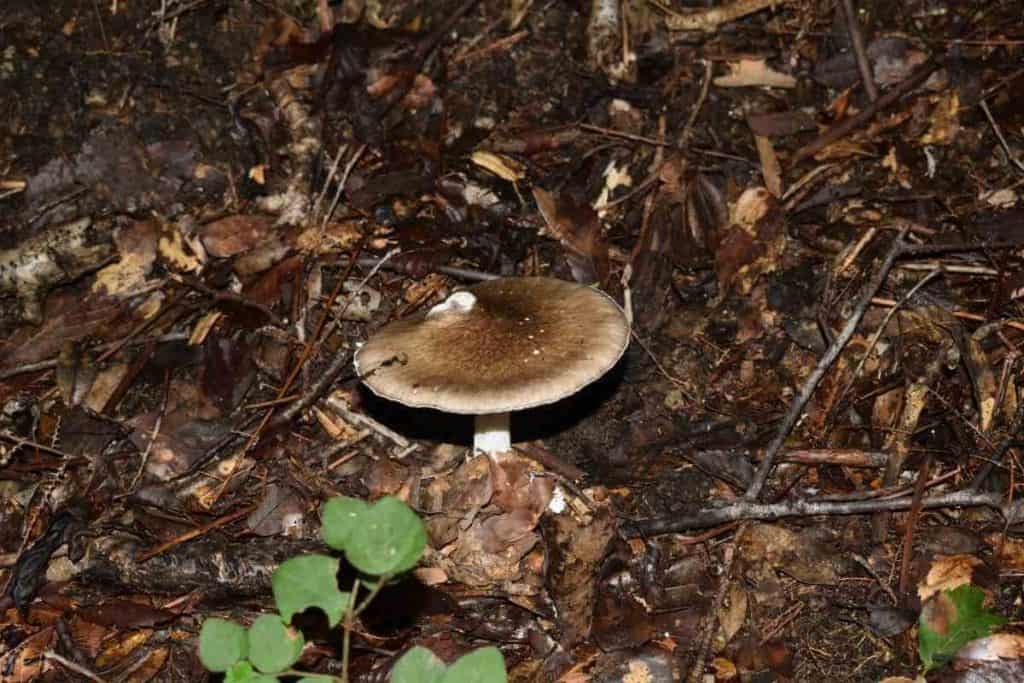
In alkaline soil, other plants thrive.
This is true of many plants. Many trees can also grow in acidic soil.
Here’s a rundown of some of the most common plants that benefit from mushroom compost:
- Goldenrod
- Lavender
- Delphinium
- Easter Lilies
- Columbine
- Virginia creeper
- Winter Jasmine
- Boston Ivy
- Lilac Bushes
- Cherry ornamental
Frequently Asked Questions
What can you not plant in mushroom compost?
Where ericaceous plants such as rhododendrons, camellias, azaleas, and heathers are cultivated, mushroom compost should be avoided because these plants require acidic growing conditions and are chalk-hating.
Can mushroom compost burn plants?
Mushroom compost can provide nutrients while also increasing the soil’s water-holding capacity. In other words, too much mushroom compost in your garden may cause plants to “burn.” The safest method to use mushroom compost during winter is sparingly.
Is Mushroom Compost good for all Plants?
It’s a terrific addition to your garden and provides a variety of nutrients. However, it should be used with caution because it might be detrimental to some plants. Overall, mushroom compost is beneficial to your garden when well combined with your soil. With mushroom compost, you can have your yard looking like it’s supposed to!
Which is better? Compost or Mushroom Compost?
Both of these things are good nutrient sources for your soil. Plants grown in soil applied to either of these products are healthy. However, mushroom compost is the best choice among the two techniques due to its less time-consuming nature.
What is the Difference between Mushroom Soil and Mushroom Compost?
Mushroom soil, like compost, is an organic material. While some items are specifically designed for performance, others simply relate to the material left over following mushroom growth before it is composted. Although spent mushroom soil can be composted to produce high-quality mushroom compost, not all mushroom soil has undergone this procedure.
Conclusion
Because of its alkalinity, certain plants dislike mushroom compost. Ericaceous plants, which prefer acid, doesn't like mushroom compost.
It supplies many nutrients and aids in moisture retention, but it also neutralizes the acid in the soil where these plants thrive, thereby hurting the plants. For this plant family, use anything other than mushroom compost.
Related Articles
- Top 8 Disadvantages of Compost Tea
- Compost Worms Vs Earthworms: All You Should Know
- Is Compost Tea Effective? (Uses of Compost Tea)
- Is EZ Straw Safe for Vegetable Garden?

